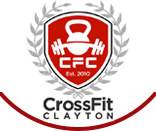Sit Up Straight like your Parents use to tell you
The aims of CrossFit are broad, general and inclusive. CrossFit looks to improve all components of fitness which include but are not limited to…
- Cardiovascular / respiratory endurance – The ability of body systems to gather, process, and deliver oxygen.
- Stamina – The ability of body systems to process, deliver, store, and utilize energy.
- Strength – The ability of a muscular unit, or combination of muscular units, to apply force.
- Flexibility – The ability to maximize the range of motion at a given joint.
- Power – The ability of a muscular unit, or combination of muscular units, to apply maximum force in minimum time.
- Speed – The ability to minimize the time cycle of a repeated movement.
- Coordination – The ability to combine several distinct movement patterns into a singular distinct movement.
- Agility – The ability to minimize transition time from one movement pattern to another.
- Balance – The ability to control the placement of the body’s center of gravity in relation to its support base.
- Accuracy – The ability to control movement in a given direction or at a given intensity.
The goal of training is to improve how a body performs and moves. However, many athletes jeopardize their training and movement with poor posture which leads to tight muscles that can alter joint motion. Although there are many examples of poor posture, a common issue that is encountered is forward head posture and rounded shoulders namely from being in a seated position for extended periods of time.

A simple hierarchy of training which athletes should adopt for themselves include…
- Flexibility
- Stability
- Strength
- Power
- All the others
Each component should precede then build upon the other. For the above example of poor static posture stretches should be implemented for the pec minor (chest), latissimus dorsi (back), sternocleidomastoid (neck) to address the muscles that are most likely tight and potentially altering joint motion. Exercises such as the Y-raise, 90/90, Reverse fly, and Straight Arm Pull down are good exercises to begin stabilizing the the shoulder girdle. The introduction of a Swiss ball to the arsenal of exercises can improve core stability which does help to improve stability at the extremities including the shoulder and could include simple movements like the Glute bridge, Back Extension, and Plank. Strength and Power exercises should take a backseat to flexibility and stability until joint motion improves and in the meantime alternate movements should be prescribed that reduce range of motion to reduce the risk of shoulder impingements and tears (like Russian swings vs American swings or Landmine Presses vs Overhead presses).
If all the above recommendations are implemented injuries can be reduced, joint motion improved and function gained. BUT, if an athlete continues to default to a bad static postural position while seated or neglect stretching then it’s hard to see improvements. CHECK YOUR POSTURE constantly and do what my dad use to tell me, “Sit Up Straight Damnit!”. It will take a lot of conscious effort at first but eventually may become habit. Check to make sure your shoulders are down and back yet relaxed, your cheek bones are over your collar bones and your sitting up tall and not rounding your back. Gently brace your abdomen. And good luck and happy training!
